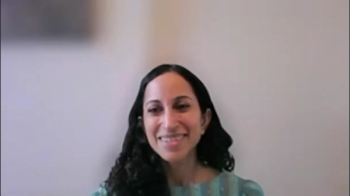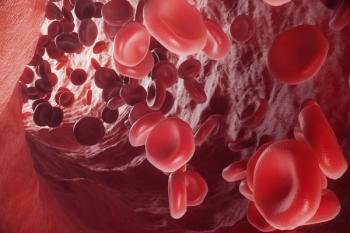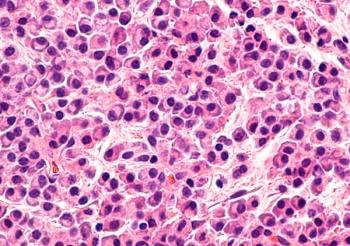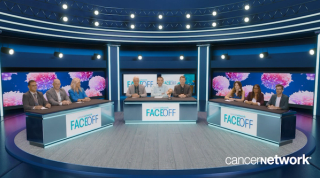
Multiple Myeloma
Latest News
Latest Videos

CME Content
More News

Panelists discuss how certain patient subgroups, such as those with high-risk cytogenetics or extramedullary disease, may experience different outcomes with GPRC5D bispecific therapies, though more data is needed to draw definitive conclusions about subgroup-specific responses.

Adding bortezomib to Isa-Rd triplet therapy enhanced MRD-negative responses in patients with transplant-ineligible multiple myeloma.

Isatuximab plus VRd triplet therapy did not significantly increase toxicity in patients with transplant-ineligible multiple myeloma in the IMROZ trial.

Isatuximab quadruplet therapy for patients with multiple myeloma prolonged progression-free survival when compared with VRd triplet therapy.

Investigators anticipate launching the dose-expansion portion of the phase 1 HDP-101-01 trial in 2025.

Samantha Shenoy, NP, MSN, suggests that support groups may help comfort patients experiencing adverse effects negatively impacting quality of life.

A nurse practitioner discussed how her role plays a vital part in patient care for those undergoing talquetamab treatment for multiple myeloma.

James R. Berenson, MD, describes ongoing efforts to evaluate treatment with JAK inhibitors like ruxolitinib among patients with multiple myeloma.

Samantha Shenoy, NP, MSN, emphasized educating patients with multiple myeloma to help prepare them for potential taste alterations after talquetamab.

Samantha Shenoy, NP, MSN, indicated that neurological issues were not prevalent with talquetamab, despite occurrences with other bispecifics antibodies.

Experts in multiple myeloma discussed optimal dosing strategies for bispecific antibodies for patients with relapsed/refractory multiple myeloma.

Panelists discuss how GPRC5D bispecific therapies have shown promising efficacy in real-world relapsed/refractory multiple myeloma patients.

Panelists discuss how their clinical experience with GPRC5D bispecific therapies has been limited or nonexistent due to the novelty of these treatments in multiple myeloma.

Mary Steinbach, APRN, shares her experience in managing dysgeusia and nail- and skin-related toxicities seen in patients with multiple myeloma who receive talquetamab.

Focusing on patients with multiple myeloma who receive GPRC5D-targeted therapy, Beth Faiman, CNP, PhD, discusses how long-term treatment impacts patients’ tolerance to adverse events.

Rafael Fonseca, MD, discusses the role of bispecifics in relapsed/refractory multiple myeloma and the implications of incorporating them into combination regimens.

The combination of talquetamab plus daratumumab yields improved patient outcomes in those with relapsed/refractory multiple myeloma.

Noopur Raje, MD, reviews clinical research on elranatamab combination therapy in patients with relapsed/refractory multiple myeloma.

Combining talquetamab with teclistamab elicits responses even among those with extramedullary disease in the RedirecTT-1 trial.

Samantha Shenoy, NP, MSN, discussed common oral and dermatologic adverse effects associated with talquetamab in patients with myeloma.

Extended follow-up from the CASSIOPEIA trial illustrates the PFS and MRD benefits of daratumumab-based induction/consolidation and maintenance therapy.

A subgroup analysis from the PERSEUS trial showed sustained PFS benefit in patients with newly diagnosed multiple myeloma receiving D-VRd.

Responses appear to improve over time in those with transplant-eligible newly diagnosed multiple who receive the belantamab mafodotin-based combination.

Combination therapy with JAK inhibitors may help improve efficacy outcomes for patients with multiple myeloma.

James R. Berenson, MD, discussed adverse effects associated with oral ruxolitinib plus selinexor in patients with multiple myeloma.























































































